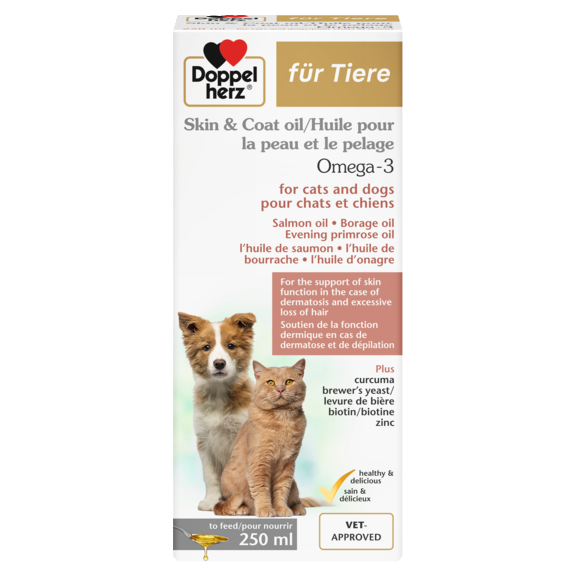If an allergy is the cause of the skin problems, the therapy must be specific to the triggering allergen. In the case of flea saliva allergy, an ectoparasitic should be used to prevent re-infestation. In the case of a feed allergy, it should be found out exactly which feeds are not tolerated and these should be consistently avoided in the diet. For environmental allergens, measures should be taken to minimise contact. If contact with the allergen cannot be completely avoided, a longer-term or even lifelong therapy is often required. An important goal of therapy is to break the cycle of itching and renewed inflammation. Medications such as cortisone or antihistamines, which reliably relieve itching and have an anti-inflammatory effect, are therefore often used. However, long-term cortisone therapy should be well weighed up, as it can be associated with sometimes unpleasant to severe side effects.
What role do feed allergies play?
Feed allergies can be accompanied by digestive disorders. However, various symptoms affecting the skin may also occur, such as redness, itching and inflammation. In the later course, discolouration of the coat or even loss of coat may occur. Some dogs show recurring ear infections as the only symptom of a food allergy, a connection that is usually not obvious to dog owners.
This means: correctly diagnosing a feed allergy is not always easy. In order to identify the disease with certainty, an elimination diet is first necessary. For this purpose, a food ration must be fed that consists of one protein and one carbohydrate source each, with which the dog has ideally never had contact. This is to ensure that the dog cannot have developed an allergy to these foods. The exclusion diet should be fed for a period of at least eight weeks. If there is a marked improvement in symptoms or they disappear completely, one of the previously fed food components can be added gradually. If symptoms reappear after adding the previous feed components, it is probably a feed allergy. A blood test, on the other hand, cannot detect a feed allergy. A positive result does not indicate an allergy to the food in question, but simply means that the dog has had previous contact with the food. A negative result in the blood test can, however, help to find suitable foods for an exclusion diet, as the dog has not yet been in contact with these foods.

